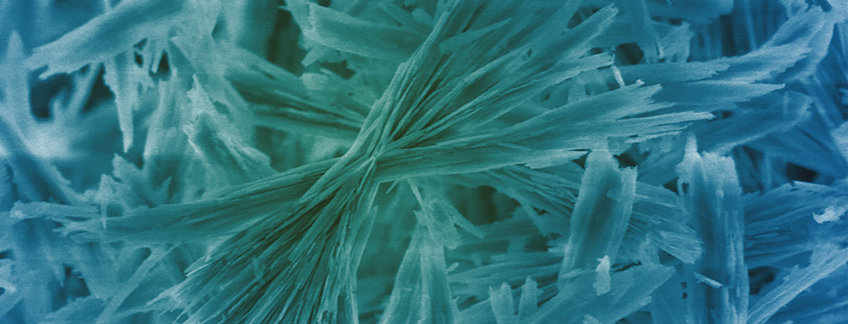
Research Program
The overarching research area of the Department is biological materials science, which connects materials science and biology in a reciprocal way: First, biomedical questions are addressed by methods and approaches borrowed from physics, chemistry or materials science. One such example is the extracellular tissue in the case of skeletal diseases and during regeneration. Second, we tap into the diversity of natural organisms to study naturally evolved solutions of engineering problems encountered by these organisms. Examples are materials combining stiffness and fracture resistance or providing capabilities for sensing, self-healing or shape-change. Many types of natural materials, often based on common classes of natural polymers, such as cellulose, chitin or protein are addressed in these ways.
This research is carried out by research groups led by scientists with diverse backgrounds, including mathematics, physics, chemistry, materials science, physical chemistry, biochemistry, wood science.
Shahrouz Amini and his group investigate the physical principle of contact mechanics in biological materials and explore the ways material architectures influence the mechanical performance of biological materials.
Cécile Bidan and her group are working on clarifying the principles that guide the architecture of biological tissues. At the moment, they focus their biophysical studies on biofilms, which are tissue-like complex 3D structures made of biopolymers produced by bacteria.
Michaela Eder works with her group primarily on cellulose-based biological materials, such as wood and certain seed capsules that open with changing air humidity or temperature. These capsules are particularly interesting because they represent models for shape-changing polymeric materials.
Franziska Jehle is interested in the multifunctional properties of slime-based materials. Her group studies snail mucus, which has a broad range of sometimes opposing functions, such as adhesion or lubrication.
Emeline Raguin’s research group aims at understanding the structural and functional properties of the materials surrounding the cells and the mineralized matrix during the development of skeletal tissues. For this goal, she develops approaches for correlative three-dimensional imaging based on cryogenic focused ion beam scanning electron microscopy.
Angelo Valleriani and his group are applying statistics, data analysis as well as modeling & theory to describe and understand biological and biophysical processes.
Wolfgang Wagermaier’s group thrives to understand the role of structure in biological and biomimetic materials with respect to biological functions and mechanical properties at different length scales. By applying combinations of materials science methods they investigate healthy and diseased bone as well as structure-function relations in other (bio)mineralized and polymer-based synthetic materials.
Richard Weinkamer’s Mechanobiology group is investigating dynamical changes in the structure of bone due to the processes of remodeling, mineralization and healing. In particular, the structure and the multifunctionality of the osteocyte lacunar-canalicular network are analyzed, which play a key role in the regulation of processes in bone. Crucial for their research strategy is a combination of experimental methods with image analysis and computer modeling.
Several of the group leaders are involved in the Max Planck Queensland Centre for the Materials Science of Extracellular Matrices. This collaborative centre between Germany and Australia was started 2022 to develop the new materials concepts for bioengineering, soft robotics and other fields based on common properties to the various materials synthesized by cells to serve as mechanical support, as repositories of information and, as consequence, represent smart materials.
In addition, we are part of the excellence cluster Matters of Activity. Image Space Material at Humboldt University Berlin. The cluster explores the re-invention of the analog in the digital age. Its core is a new active materiality which is beginning to transform research and everyday life. Today’s digital technology is engendering completely new modes of agency based on material carriers, spatial structures, and images that are primarily conceived as passive instruments. While research, industry, and our whole society are moving toward a new expansion and implementation of the digital into all spheres of life, we propose to explore the opposing direction by addressing a new culture of the material. For us, both tendencies—digitalization and the re-invention of the material as active matter—are deeply connected.
Our department is part of the Berlin-Brandenburg School for Regenerative Therapies, which offers interdisciplinary training and research opportunities in the field of Regenerative Medicine for outstanding doctoral and postdoctoral researchers with a background in the biological, engineering or clinical disciplines. The graduate school brings together Berlin and Potsdam’s Universities and other renowned research institutions in and around Berlin and their international top-level scientists who are dedicated to the training of tomorrow’s interdisciplinary scientists.